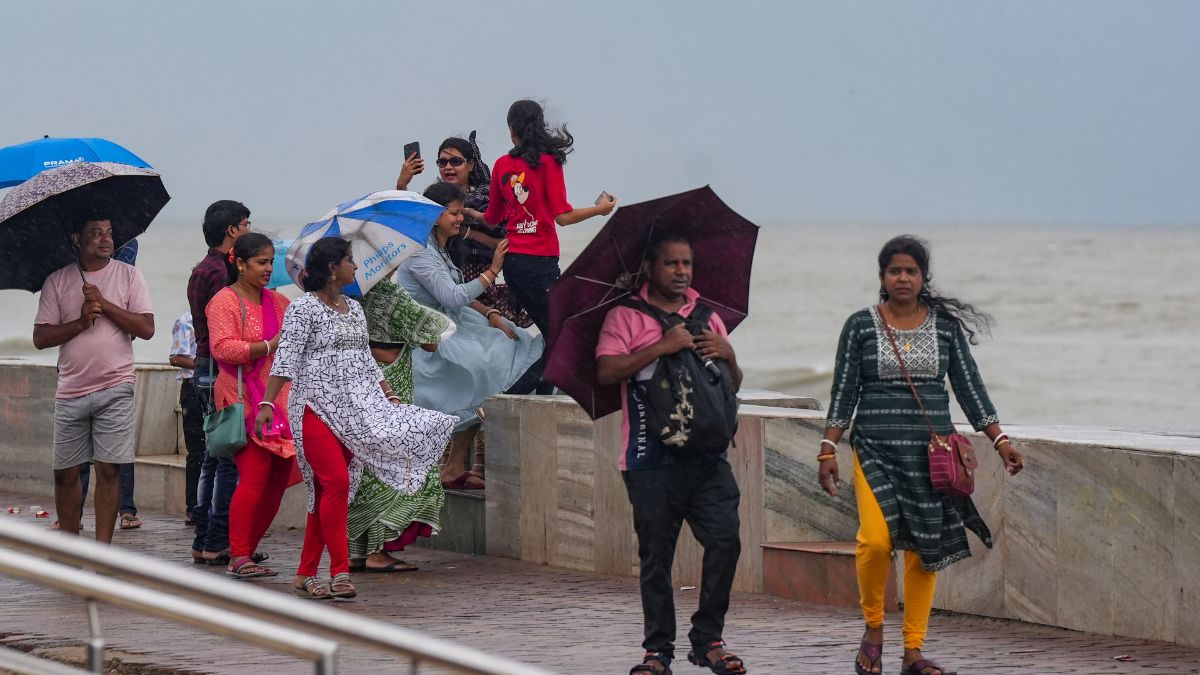A “severe cyclonic storm”, named Cyclone Dana, is set to make landfall between Bhitarkanika National Park and Dhamra port in Odisha late Thursday (October 24) and early Friday (October 25). According to the Indian Meteorological Department (IMD), the tropical storm formed in the Bay of Bengal is predicted to pack winds of 100-110 kph and gusts up to 120 kph.
The cyclone is moving north-northwestwards with a speed of 13 kmph and has ushered heavy rainfall in parts of Odisha and West Bengal. As the severe cyclonic storm approaches, how can one track it?
Let’s take a closer look.
Cyclone Dana’s impact
Cyclone Dana started forming over the Bay of Bengal in the early hours of Wednesday. The IMD has forecast it will bring “heavy to very heavy” rainfall along the eastern coast for the next 24 hours.
The weather agency has warned of strong winds, high storm surges and intense downpours in parts of Odisha and West Bengal.
“There are chances of storm surge (above the astronomical tide) resulting in inundation of low-lying areas in Kendrapada, Bhadrak and Balasore districts during the landfall,” Umashankar Das, a scientist at the Bhubaneswar regional centre, told Indian Express.
Ahead of the landfall, heavy rains and gusty winds lashed southern West Bengal on Thursday.
As per the IMD, Cyclone Dana is carrying intense convection in its western sector that is right up to the upper layers of the atmosphere, reported Down To Earth magazine.
The core of the cyclone has warm moist air, which could increase convection and the rainfall it may carry. As per the magazine, the Madden-Julian Oscillation (MJO) could also affect the rainfall that the cyclone will bring. MJO is an “eastward moving disturbance of clouds, rainfall, winds, and pressure that traverses the planet in the tropics”, according to the National Oceanic and Atmospheric Administration (NOAA).
There are several phases of the MJO. It is currently in phase 5, which means an enhanced convection or rainfall, Down To Earth reported citing the IMD.
Impact Shorts
More ShortsThe weather department has warned of heavy rainfall in West Bengal’s Purba, Paschim Medinipur, Jhargam, Kolkata, Howrah, Hooghly and North and South 24 Parganas.
In Odisha, the districts of Jagatsinghpur, Kendrapara, Bhadrak and Balasore are expected to bear the maximum brunt of the cyclone.
Schools have been shut in Odisha and West Bengal as these states brace for Cyclone Dana.
West Bengal Chief Minister Mamata Banerjee said schools in seven districts will remain closed from October 23 to 26. The Odisha government shut all educational institutions including schools, colleges and universities in 14 districts until Friday in view of the tropical storm.
Cyclone Dana has disrupted travel, with hundreds of trains and flights cancelled.
All flight operations at Kolkata Airport were suspended from 6 pm on Thursday to 9 am on Friday. Flights to and from Bhubaneswar have also been suspended from Thursday evening to Friday morning.
Preparedness for Cyclone Dana
Odisha is evacuating over 10 lakh people ahead of Cyclone Dana’s landfall. “The state has identified over 3,000 vulnerable locations (villages) across 14 districts, primarily along the coastal belt, and started evacuation procedures. As many as 10,60,336 people are likely to be evacuated before Cyclone Dana makes landfall,” Odisha Revenue and Disaster Management Minister Suresh Pujari said, as per Indian Express.
Odisha CM Mohan Majhi has said 7,285 cyclone shelters are ready to accommodate evacuated people.
More than 2.5 lakh people have been evacuated to safety in West Bengal in anticipation of the severe cyclonic storm.
The IMD has urged fishers not to venture to sea from October 23 to 25.
Rescue teams are also on standby. About 20 National Disaster Response Force (NDRF) teams, 51 Odisha Disaster Rapid Action Force (ODRAF) teams, 200 fire services teams and 158 platoons of police have been deployed in Odisha.
In West Bengal, 13 battalions from the state’s disaster management force and 14 teams from the NDRF have been deployed in the coastal regions.
The Indian Coast Guard has mobilised vessels and aircraft to address any emergency at sea.
Rescue and relief teams from the Indian Army and Navy are also ready.
ALSO READ: In Graphics | How cyclones form and their devastating impact
How to track Cyclone Dana?
While the IMD provides regular updates about the cyclone, it does not have a real-time cyclone tracker.
Third-party services like Windy and Zoom Earth show the estimated trajectory of the cyclone, along with wind speeds.
Other apps to track Cyclone Dana are Windfinder, My Hurricane Tracker & Alerts and The Weather Channel.
With inputs from agencies


)

)
)
)
)
)
)
)
)



